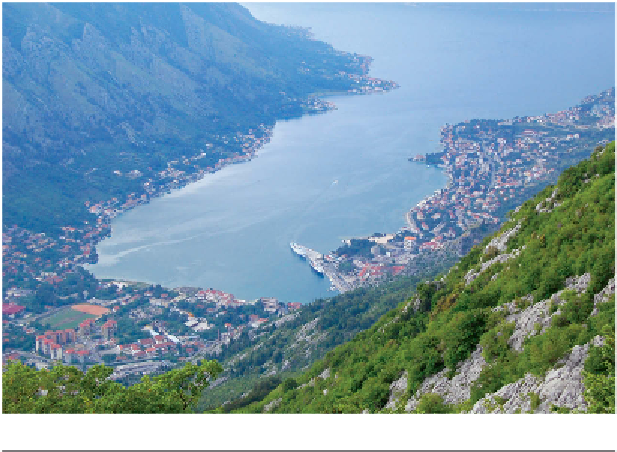Travel Reference
In-Depth Information
A zigzag road leads high above the Bay of Kotor to the historic capital of Montenegro.
I climbed 25 switchbacks—someone painted numbers on each one—
ascending from the Montenegrin coast with its breezy palm trees, popular
ice cream stands, and romantic harbor promenades into a world of lonely
goats, scrub brush, and remote, seemingly deserted farmhouses. At switch-
back #4, I passed a Gypsy encampment. At #18, I pulled out for a grand
view of the Bay of Kotor and, pulling on my sweater, marveled at how the
vegetation, climate, and ambience were completely dif erent just a few twists
in the road above sea level.
At #24, I noticed the “old road”—little more than an overgrown donkey
path—that was once the mountain kingdom's umbilical cord to the Adriatic.
h e most vivid thing I remember about my last visit, decades ago, was that
a grand piano had literally been carried up the mountain so some big-shot
nobleman could let it go slowly out of tune in his palace.
As I crested the ridge, the sea disappeared and before me stretched a
basin dei ned by a ring of black mountains—Montenegro's heartland. Explor-
ing the poorest corner of any European country can be eye-opening—but
Montenegro's is more evocative than most. Desolate farmhouses claim to sell
smoked ham, mountain cheese, and
medovina
(honey brandy), but I didn't
see a soul. Up here, the Cyrillic alphabet survives better than on the coast.
Every hundred yards or so, the local towing company had spray-painted on















































































